#harriet schiff
Text
She's Learning
Words: 100
Fandom: The Magicians (TV)
Characters: Zelda Schiff & Harriet Schiff, Gavin Winterbottom, Everett Rowe
Summary: Sign language is a hard way to communicate when you're a magician, and moving your hands tends to bring forth, well, magic.
#the magicians#zelda schiff#harriet schiff#magicians fanfic#mageina tovah#penny the librarian#zelda the librarian
5 notes
·
View notes
Text

June 1964. A month into Batman's "New Look" period, Alfred the butler is dramatically killed off in DETECTIVE COMICS #328. Writer Bill Finger gives Alfred a suitably heroic demise, sacrificing his life to save Batman and Robin from the Tri-State Gang.

Ouch. This is fairly grisly for Silver Age DC, and, more significantly, obviously intended to be final. (If you're going to seemingly kill off a character with the intent of bringing them back later, "crushed to death by tons of rock right in front of their closest friends" is probably not the way to go.)
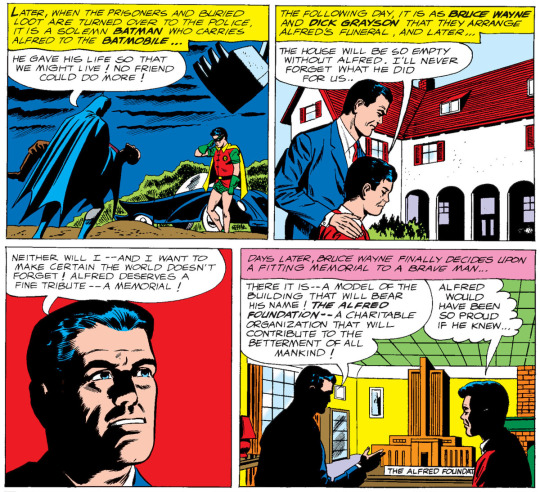
Two points of interest here: First, the Alfred Foundation, as will be explained later, is the antecedent of what later became the Wayne Foundation (whose building was redesigned in the early 1970s), which did not yet exist at this point. Second, it's awkwardly obvious here that Alfred had never been given a canonical last name. In one 1945 story, he'd used the name "Alfred Beagle," but that hadn't been mentioned again afterward. The name "Pennyworth" was first used in 1969, five years after this story.
Why did editor Julius Schwartz kill off Alfred, who'd been a staple of the Batman strip since 1943? According to Schwartz, it was to help lay to rest the insinuations that had been floating around for years (especially in the wake of Frederic Wertham's SEDUCTION OF THE INNOCENT a decade earlier) that the Wayne household seemed awfully gay. It should be understood that the modern conception of Alfred as a military veteran and one-time badass didn't arise until the 1980s; since his introduction in 1943, Alfred had been primarily a comic relief figure, and generally a bit of a ninny. Schwartz wanted to replace him with a "a sort of chaperoning den mother," which became Dick Grayson's Aunt Harriet, introduced at the end of this story:
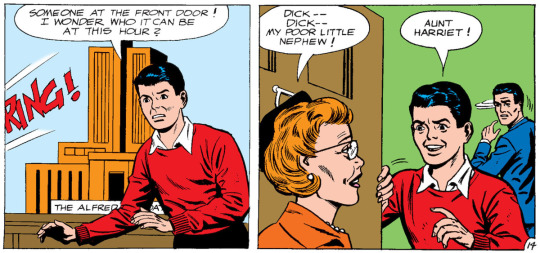
Schwartz claimed that he borrowed the name "Aunt Harriet" from the lyrics of the 1929 Hoagy Carmichael standard "Rockin' Chair." Like Alfred, she didn't initially have a last name (the name "Cooper" came from the TV show, and didn't appear in the comics until DETECTIVE COMICS #373). In the comics, she was not as old or quite as matronly as Madge Blake, who played the character on TV; she was perhaps a decade older than Bruce Wayne.
I'm a little skeptical of Schwartz's assertion that his goal in killing off Alfred in favor of Aunt Harriet was to make Bruce and Dick seem less gay. If that was the plan, it wasn't terribly effective: For one, as the TV show demonstrated, her presence in the Wayne household hardly decreased the camp factor, and the principal dynamic of her comics appearances was to have her nosiness constantly threaten to "out" her nephew and his guardian! Moreover, the "New Look" period actually discarded the three recurring female characters who'd previously been positioned as romantic foils (Batwoman/Kathy Kane, Vicki Vale, and Bat-Girl/Betty Kane) — there would be new ones, but they wouldn't appear for a while, nor did Catwoman (who had been absent since 1956 and didn't return to the comics until 1966) — so Schwartz actually cemented Bruce and Dick's "confirmed bachelor" status, at least for a while.
My guess is that Schwartz, who had been given just six months to turn around BATMAN and DETECTIVE COMICS (whose sales were in very bad shape in 1963–1964), figured that killing Alfred would be an easy way to shake things up a bit. As with the yellow oval Carmine Infantino added to Batman's chest emblem, it was a dramatic but largely cosmetic gesture that didn't really alter the direction of the strip in any very meaningful way.
#comics#detective comics#bill finger#sheldon moldoff#joe giella#bob kane#julius schwartz#new look batman#silver age batman#batman#bruce wayne#robin#robin the boy wonder#alfred pennyworth#harriet cooper#wayne foundation#batman 66#batman tv show#it's hard to fathom now that the batman books were dying#but if you read a smattering of the weirder Schiff-era stories#it becomes clearer#he had been trying to reintroduce more of the batman villains#which was an improvement#but there had been about six years of wall-to-wall aliens
18 notes
·
View notes
Text
New ch of another fav fic up--so great!
I fell in love with this from the first--if you haven't started it yet--please do--such a treat!!! @magicians4time thank you for this, I love it so much!
Falling for a Memory (19634 words) by Librarity
Chapters: 6/7
Fandom: The Magicians (TV), The Magicians - Lev Grossman
Rating: Teen And Up Audiences
Warnings: Creator Chose Not To Use Archive Warnings
Relationships: Quentin Coldwater/Eliot Waugh, Margo Hanson & Eliot Waugh
Characters: Quentin Coldwater, Eliot Waugh, Jane Chatwin, Margo Hanson, Kady Orloff-Diaz, Harriet Schiff, Julia Wicker
Additional Tags: Hedge Witch Quentin Coldwater, Alternate Timelines, Winter, Memory Alteration, Memory Magic, Anniversary, Brakebills (The Magicians), Idiots in Love, Protective Eliot Waugh, Magic-Users, Falling In Love, Proof of Concept (The Magicians), Protectiveness, Insecurity, Magical Boys, Boys In Love
Summary:
Quentin saw dark curls and distinct features before he actually felt the arms around his upper body. Lovely hazel eyes looked at him from upside-down and he was hit in the chest with an instant sense of recognition. Like finally-finally-finally even though he had never seen this man before.
Softly, almost reverently, he thought he heard the man whisper, "I found you…" but that couldn't have been.
#HappyAnniversaryQueliot
11 notes
·
View notes
Text
NOTES (1997)
The Lost World: Jurassic Park is the sequel to Steven Spielberg's 1993 film recounting events on a Costa Rican island inhabited by genetically-engineered dinosaurs, which broke all box-office records and showcased an emerging visual effects technology.
Based on the novel by Michael Crichton, the story picks up four years after the disaster at Jurassic Park. Something has survived on a second island Isla Sorna, where the dinosaur manufacturing facility code-named Site B has been destroyed by a hurricane and the animals now run free, constrained only by the laws of nature.
"When I first heard that Michael was going to write the book and that he was thinking of calling it The Lost World, I was thrilled because I'm a big fan of Sir Arthur Conan Doyle's book The Lost World. I was compelled by the idea of being inside a prehistoric world that exists today - not behind electrified fences, not in a theme park, but in a world without the intervention of man. I thought, 'Wow, what a great story.' If I hadn't found a story I was interested in, Jurassic Park would have remained just a nice memory for me," says Steven Spielberg.
For Spielberg, who had been carefully considering a number of projects for his return to directing after a three-year hiatus, Crichton's interest in revisiting the Jurassic saga helped sway his own decision. Universal Pictures and Amblin Entertainment, Spielberg's production company, had begun discussing a sequel to Jurassic Park as the original film was breaking box-office records around the world en route to becoming the highest-grossing motion picture of all time. Now, Spielberg, Crichton and Jurassic Park screenwriter David Koepp entered into a gentleman's agreement to bring The Lost World to the screen, under the Universal-Amblin umbrella.
"I realized that what I really wanted to do was direct. I had started a company and done a lot of other things in those three years. So I was ready to return to it, and I had always wanted to do a sequel to Jurassic Park - both because of popular demand and because I'd had such a great time making the first film," Spielberg reflects.
With the deal in place, Spielberg began to pull together a creative team, nearly every member of which was a veteran of Jurassic Park. Serving with Spielberg were producers Gerald R. Molen and Colin Wilson. Executive producer Kathleen Kennedy would also return to the fold, along with production designer Rick Carter, film editor Michael Kahn and composer John Williams. With full motion dinosaurs by Dennis Muren, live action dinosaurs by Stan Winston and special dinosaur effects by Michael Lantieri, this Academy Award®-winning triad that had combined talents to create the dinosaur effects for the first film also committed to the sequel. Of all the department heads, only director of photography Janusz Kaminski - who had shot Schindler's List for Spielberg - was not an alumnus of Jurassic Park.
In The Lost World: Jurassic Park, Jeff Goldblum reprises his role as chaos theorist Ian Malcolm and Richard Attenborough makes a special appearance as the ambitious entrepreneur John Hammond. Julianne Moore (Nine Months ), Pete Postlethwaite (In the Name of the Father ), Arliss Howard (To Wong Foo, Thanks for Everything! Julie Newmar ), Vince Vaughn (Swingers ), Vanessa Lee Chester (Harriet the Spy ), Peter Stormare (Fargo ), Harvey Jason (Air America ), Richard Schiff (City Hall ) and Thomas F. Duffy (Wolf ) join Goldblum in the cast.
The Lost World: Jurassic Park is Spielberg's first film since 1993, when he directed both Jurassic Park and Schindler's List, which won a total of seven Academy Awards® including Best Picture and Best Director. Jurassic Park was also honored with three Academy Awards® including Best Sound, Best Sound Effects Editing and Best Visual Effects.
It was clear that Universal wanted to talk about doing a sequel in the record-setting period following the release of the original film. (With worldwide ticket sales of more than $916 million, Jurassic Park continued to break records when it was released on home video, where it holds the title of top-selling live-action motion picture of all-time.) The filmmakers had discussions amongst themselves and with Michael Crichton.
While there was interest in a sequel, there was no guarantee that Crichton was going to write another book. Determining a schedule for a second Jurassic Park film was dependent on whether Crichton would proceed.
Meanwhile, Spielberg and screenwriter David Koepp were already talking. Yes, the director confirmed, there would be interest in an encore, if there was a good story to be told.
In those heady months after the release of Jurassic Park, when the question of whether dinosaurs could be made real was answered with a resounding affirmative, there was a new question. "Sure you can do dinosaurs, but what can you do with them?," Koepp remembers thinking.
So began the dialogue between the filmmaker and the screenwriter, who were getting together from time to time to just bounce ideas off one another, recalls Koepp.
Word that Crichton was working on the manuscript for his follow-up novel only served to sharpen Koepp and Spielberg's wild imaginations. "We'd throw ideas at one another and see what kind of reaction it provoked," recounts Koepp. "Suddenly I'd say something and that made him think of something that made me think of something. It just feeds in that way."
Spielberg would go off from these brainstorming sessions and storyboard the ideas. "Steven's got such a wonderful, fertile mind, especially for these sorts of adventure sequences and action sequences," says Koepp. His challenge as a writer was to figure out how to incorporate what he describes as "these fantastic sequences" into the loose structure of a movie that he had in mind and then integrate them with Crichton's work.
"In an interesting way, this is a lot like the way animation works where you start with a visual idea and then, in a very logical way, craft the story," observes executive producer Kathleen Kennedy. "Our story was very dependent on the visual imagery."
"When you have Michael Crichton and the book, you are already in very good shape," says Kennedy. "Add to that the combined imagination of Spielberg and Koepp and you have the basis for a very exciting film."
One of the challenges in approaching The Lost World was the audience's own enormous expectations. As Koepp observes, "audiences tend to feel pretty proprietary about it. Everybody has their own ideas about what should happen in a sequel."
Fortunately, Spielberg has never forgotten his own experiences at the movies going back to his boyhood days when his father took him to see Cecil B. DeMille's The Greatest Show on Earth. He was amazed by the power of the cinematic experience and soon started to make movies with friends and members of his family. "The audience comes first," says Spielberg. "I really think of the audience when I think of a Jurassic Park or a Lost World or the entire Indiana Jones series. A lot of this movie was made for what I hope is the pure pleasure of an audience."
The result is a movie that is both similar and different - an intense, visually stunning adventure that pushes the limits of imagination and technology.
Audiences will embark on this new adventure with a familiar face as their guide. "I cast Jeff Goldblum again because he is Ian Malcolm," says Spielberg. "There is no Ian Malcolm except as played by Jeff." This time, Dr. Malcolm is the anchor for the story. "In the first film, Malcolm was along for the ride and he was kind of a critic," Spielberg continues. "In this sense, he's leading the journey in The Lost World. He has a very strong motivation for returning."
Jurassic Park ushered in a new era of visual effects, brilliant computer-generated images (CGI) blended seamlessly with the state-of-the-art mechanical and animatronic special effects. The combination gave life to creatures believed to be extinct for 65 million years. "I think that people were a little bit amazed that the dinosaurs looked as real as they did," says Spielberg.
But whereas moviegoers in the summer of 1993 were awestruck by the on-screen digital recreations, audiences today will come to the theaters expecting to see nothing less than living, breathing dinosaurs.
"With the first movie, we had no idea how we would make the dinosaurs real," admits Kennedy. "With the sequel, we had a very clear idea of the visual effects and were very comfortable with the technology for computer graphics. So for The Lost World, we were able to focus on the storytelling."
"It was the story that justified doing a sequel, not the technology," Spielberg comments. "CGI has improved since the first movie and the artistry of the people involved has also improved. So there was a good chance that the dinosaurs would look even more believable than they had in the last adventure. But it was really the story that compelled me to make this movie."
The notion of a lost world, a window on earth's distant past, inspires the imagination. The occasional real-life discovery of a prehistoric link - such as the ancient coelacanth: the 400 million-year-old fish found still to be alive or prehistoric insects found perfectly preserved in amber - fuels these dreams. Sir Arthur Conan Doyle visited the subject in his turn of the century Professor Challenger series. Somewhere beyond Doyle's vision of an evolutionary anomaly and John Hammond's technologically marvelous Jurassic theme park is The Lost World.
On another island off the coast of Costa Rica, in a chain called Los Cinco Muertas (The Five Deaths), dinosaurs are living and breeding in the wild. This is Site B. "A genetic laboratory, the factory floor, so to speak," explains Spielberg, where once upon a time experiments and cloning attempts not suited for public exhibition were conducted by InGen scientists.
The behind-the-scenes laboratory was knocked out of commission, but nature found a way. For four years now, dinosaurs have flourished in a perfect ecological system unfettered by man.
As The Lost World begins, the balance of nature is about to be tested once again. Peter Ludlow (Arliss Howard), John Hammond's mercenary nephew, has taken over the nearly bankrupt InGen. In a presentation to the board of directors, he unveils a plan to restore the corporation's financial health by harvesting the "significant productive assets that we have attempted to hide." For him, Site B is a giant cash cow just waiting to be milked.
Hammond (Richard Attenborough) is well aware of the commercial potential in Site B. But he sees another opportunity: a chance to redeem himself by preserving a record of the dinosaurs living in their natural state.
"Finally, what he will have done will not be a terribly tragic thing, but a contribution," says actor Jeff Goldblum.
"He's a dreamer," says Lord Attenborough of his character. "He's not unlike Mr. Spielberg, to a certain extent, in that he is fascinated by the infinite capabilities of human endeavor. Hammond just goes that much farther." The Jurassic Park founder is somewhat chastened and tempered by what has happened before. "But the old temptations and the old adrenaline comes up and he takes risks again."
Hammond organizes an expedition to reach the island before Ludlow lands his own, less noble mission led by Roland Tembo (Pete Postlethwaite), a leathery adventurer and hunter. To accomplish this he commissions Nick Van Owen (Vince Vaughn), a daring video-documentarian, to chronicle the trip; Eddie Carr (Richard Schiff), a field equipment systems specialist, to outfit the team and keep the operation running in the field; and Dr. Sarah Harding (Julianne Moore), a pioneering paleontologist specializing in the nurturing behavior among carnivores - especially carnivorous dinosaurs.
"Sarah is opening up a new field of study, and she uses this as an opportunity to explore her beliefs," Spielberg observes. "She has an insatiable curiosity." Which is exactly why Sarah mentioned none of this to her boyfriend, Ian Malcolm, who would have tried to stop her had he known. When Hammond asks Malcolm to lead the venture, he refuses - until Hammond informs him that Dr. Harding is already there.
The revelation that his girlfriend is alone on an island with dinosaurs drives Malcolm into action. "It's a very monumental moment for me," Goldblum explains. "I go down there with a head full of steam and a gut full of passion."
Of the people who reach the Lost World, only Malcolm comprehends the danger. He knows from experience that people shouldn't be where dinosaurs are. "It's going to be bad for people," Goldblum says dryly. Among these people is Kelly Curtis (Vanessa Lee Chester), a young stowaway, whose presence on the island raises the stakes even higher for Dr. Malcolm.
In Jurassic Park, Malcolm was more of the moral, conscience-driven intellectual drawn to the exotic park out of curiosity. "This time," says Goldblum, "I've got a very emotional, passionate and driving reason to bring me back. I am a force of nature."
"Drama is often like rubbing two sticks together and watching what it sets aflame," notes Spielberg of the confrontation between the two philosophically-opposed expeditions - one sent to protect the sanctity of the habitat and the other to roundup the animals for commercial exploitation - who "end up having to band together just to survive. That creates more than just a lot of running from dinosaurs - there's a great deal of emotional drama, as well."
Screenwriter Koepp remembers a conversation in which Spielberg told him, "I think this movie is about hunters versus gatherers." Koepp adds "that when the two groups are thrust together into survival situations is when it gets really fun."
Jurassic Park raised the question of man's role in trying to control nature. "You decide you'll control nature and from that moment on you're in deep trouble because you can't do it," says Michael Crichton. "You can make a boat, but you can't make the ocean. You can make an airplane, but you can't make the air. Your powers are much less than your dreams would have you believe."
The debate continues in The Lost World; this time the argument is framed by setting the story in the dense forest wilderness, where man's impact on life and the environment is clearly evident. As the Native American Chief Seattle observed a century ago, "Man did not weave the web of life, he is merely a strand in it. Whatever he does to the web, he does to himself."
"The Lost World is exactly what it implies," says Spielberg. "A lot of people who think they can control nature are very presumptuous about their role in the scheme of things and wind up on the short end of the food chain. You have to band together to live and go on."
"It's important in these movies that animals never be characterized as villains, because they are not," Koepp points out. "They're just doing what they do. It's when the humans come into conflict with one another that they may find themselves at the mercy of the animals."
"On one level, this story evolved into one about parenthood and the instinct to protect your young," he continues, echoing a theme that applies to the films human and animal characters. On a more superficial level, the story evolved into one of survival.
Then there is the moral question explored in Jurassic Park. "DNA cloning may be viable, but is it acceptable?" asks Spielberg. "Is it right for man to do this or did dinosaurs have their shot?"
The controversy over cloning - it's possibility implied in Jurassic Park and proved in real life in February 1997 when researchers in Great Britain announced their success in cloning a sheep - raged anew on the front page of newspapers just as The Lost World was in post-production.
Spielberg always respected the science behind Jurassic Park as real, much as he respected real-life research as the basis for his other projects, such as Close Encounters of the Third Kind .
Contained in those news stories was another point that confirmed what Crichton, Koepp and Spielberg suggested in their latest adventure. The failure rate in cloning an animal is presently staggering: on the order of 300 to 1. For every success, there were numerous failures, from death to deformity, if the cloning procedure took at all. As Hammond tells Dr. Malcolm, he needed a factory, Site B, to overcome this ratio and stock Jurassic Park with the perfect specimens visitors saw there.
"A movie like this needs at least a year to 18 months of prep time," says Spielberg. "You can't just throw this together in a normal four-month prep for a drama or a comedy. It takes 18 months to build the animals. We began sketching and designing some of the sequences about two years ago."
In the spring of 1995, production on The Lost World: Jurassic Park started to come together. Producers Gerald R. Molen and Colin Wilson, both longtime Spielberg collaborators who were veterans of the first movie, began to focus their substantial producing skills on the project. Molen roughed out a schedule and budget as Michael Crichton was concluding his novel and Spielberg and screenwriter David Koepp were developing ideas for the screenplay. Colin Wilson, who oversaw the visual effects work and was largely responsible for the post-production on Jurassic Park while Spielberg was in Poland making Schindler's List, reassembled the visual effects team from the first film and began to address the dimensions of the new project. Dennis Muren at ILM, Stan Winston and Michael Lantieri were all eager to apply newly-developed technologies to better what they accomplished with stunning effect on the first film.
Production designer Rick Carter, who also designed the look for Jurassic Park and has been associated with Spielberg and his production company since the Amazing Stories television series, began his work on The Lost World when he and storyboard artist Dave Lowery met over dinner with Spielberg that spring. "We just started storyboarding one of the scenes from the book and it evolved from there. By the fall, we had a full crew of set designers, art directors and illustrators," Carter recalls.
"It's my job to find a lost world and then create The Lost World," Carter continues. "In this particular film, we are coming back to the same type of place where we were in the first film but it's a lot rougher." That this more natural, wild environment is less hospitable to the dinosaur population than the safe containment of the man-made park of the first movie can be seen in the battle-scarred head of the male T-Rex.
Carter and his team constructed various environments based upon what they knew as the outline of the movie. "We would show Steven our ideas for sets and when he approved them, that would often spark ideas - right on the spot we'd come up with more and more scenes, and those would be storyboarded and become part of the actual story."
The preliminary visualization phase continued as Carter, his art directors, draftsmen and illustrators refined the ideas into models. Carter also turned to the computer for help in determining the look of many of the visual effects sequences. He made rough 3-D animations, called animatics, which show characters moving within an approximation of the set.
"In this kind of movie, so much is being constructed visually," notes Carter, contrasting the open, organic process of creating The Lost World with other projects where the look is strictly determined by "a narrative we absolutely adhere to at all times."
The storyboards, animatics, illustrations and models created by Carter's art department provided the foundation for the entire production. The storyboards gave every member of the growing production team a clear idea of Spielberg's vision - information they would use to prepare their portions of the picture. They were constant throughout production with filmmakers using them as a guide from the earliest days of prep right through post-production. On the set, for instance, storyboards for each day's work were posted on a large display board. As pieces of the sequence were shot, the corresponding storyboard was marked as complete.
Storyboards for the big set piece action sequences were released to the visual effects teams early to give them as much time as possible to complete the intricate task of flawlessly interlacing digital, physical and robotic effects. There was no question that the visual effects for The Lost World would be every bit as challenging as they were on the first film. Perhaps even more so because audiences that had modest expectations for the first film's dinosaurs would now expect greatness.
Stan Winston was already well on his way to creating an entire new set of dinosaurs at his studio in Los Angeles' San Fernando Valley. New technology and such seemingly simple things as improved hydraulic systems were developed in the years between Jurassic Park and The Lost World. As dazzled as audiences were with Winston's brilliant work on the first film, he knew that he could do even better and was determined to prove the point.
"People are very aware of the advancements in the computer world since Jurassic Park," Winston comments, "but they tend to forget that the animatronic world has also made some incredible advances, producing characters in which the technology is virtually undetectable. In large part, that is due to the tremendous advances we made in Jurassic Park and in the time since then."
"There were tremendous developments in hydraulic technology - developments that allowed us to manufacture twice the number of creatures in half the amount of time and for slightly less money," Colin Wilson elaborates. "That was quite amazing. We got a lot of improvements in performance and technology. We got double the number of characters, and we paid less for it. But the most important part of the equation was how much better the character performances would be for this movie."
The sequel gave Winston the opportunity to make dinosaurs that were even more lifelike. But it wasn't just a matter of refitting the creatures from the first film with new movements and armatures. To begin with, there are more dinosaurs in The Lost World. So while the retooled T-rex from the first film joins Goldblum and Attenborough as a returning cast member, Winston and his crew built a second adult T-rex from scratch and fabricated nearly 40 creatures in all. The Stan Winston Studio, located in an industrial section of Van Nuys, utilized the talents of more than 100 artists and technicians during the year and a half that it took to design, draw, sculpt, mold, frame, mount and paint the different dinosaurs. There was diversity, too: from the tiny chicken-sized Compsognathus ("compy") to the two-story-tall T-rexes.
The work also involved careful coordination with the other two captains of the visual effects squad. Lantieri, who heads up the mechanical effects team, worked closely with the Winston shop to fabricate the giant T-rex frames and movements, as well as several other design issues. The Winston Studio's maquettes, scale models of the finished dinosaurs, were shared with Muren and his team at ILM, where they matched the colors, textures and movements of the digital creatures so that they would mesh seamlessly with Winston's live-action dinosaurs.
Part of what makes Winston and his creatures so magnificent is his approach. He doesn't think of them in a mechanical sense, and he couldn't tell you exactly how to build them. He doesn't look at his creations as inanimate robots. Instead, he thinks of them as characters, performers and stars. "We give them personalities. They have expressions," he says.
In fact, it is Winston's own background - first as an actor, then as a make-up artist and more recently as a director - that helps him keep his crew focused with this idea. On the set, as he stands next to Spielberg, he speaks to his puppeteers through headsets, intoning cues and direction for their "performance."
The animal characters created by Winston proved to be a benefit for the human actors, as well. It gave them a real representation - an actor, so to speak - to play against.
To add to the authenticity of the dinosaur fabrications, Spielberg once again enlisted noted paleontologist Jack Horner of the Museum of the Rockies, who had served as an advisor on Jurassic Park. This noted scholar, who is one of the world's foremost fossil hunters, worked very closely with Spielberg and Winston in creating lifelike representations of these long extinct creatures. Although much of our dinosaur knowledge is based on speculation, Horner revealed that there is much that can be deduced by putting knowledge of today's skeletal science together with the fossilized bones. Like a detective, Horner and other researchers like him are able to develop detailed ideas of what dinosaurs looked like and how they behaved - knowledge that Spielberg and Winston readily applied to their work in The Lost World .
Horner's work with Winston was especially important because the look and movement of the Winston dinosaurs would become the basis, most notably in terms of appearance and texture, for the digitally created dinosaurs that Muren would produce.
In San Rafael, California, Muren was gathering his legion of digital artists at Industrial Light & Magic. Since Raiders of the Lost Ark, Spielberg has relied upon the collective talent at ILM, and one way or another Muren has been a part of it all.
Digital technology is moving with such velocity that techniques painstakingly developed at the beginning of Jurassic Park were surpassed by improvements before production was over. There was tremendous desire on the part of many who worked on the original film to finesse the visual effects to an even higher level. "This show is a lot different from Jurassic Park in that we were sort of timid on the first one because we didn't know if we could do it," says Muren. "Now we figured out we could do it and have had three years to think about it."
Like Winston, Muren wanted to improve on what he did with the first movie. This time he wanted to give Spielberg something else: freedom. "At the beginning of the show I mentioned to Spielberg that we can do just about anything," Muren relates.
The idea and overarching philosophy driving Muren and ILM is that filmmakers shouldn't have to think about the technology so that they can be free with the images. So, for over 20 years, we've been building up tools to give these directors what they want without restraint.
Examples of this independence include the ability to shoot visual effects shots with complete freedom of movement for the camera and a greater degree of interactivity between the CG creatures and live action actors. Visual effects shots used to mean locked-off cameras and rigid procedures. But technology has advanced to the point where the visual effects camera can be mounted on a steadicam and moved about with total fluidity.
No matter how wonderful and real the work of Winston and Muren appears to be, it wouldn't play as well without the third element of the visual effects team - Lantieri's physical effects. Lantieri, one of Hollywood's most skilled effects men and another longtime member of the Spielberg team, remarked that he had more work to do in the final weeks of the 14-week shoot on The Lost World than he did throughout Jurassic Park. "Everything about this show is big," says Lantieri. "On the last show, we crashed an explorer. This time we dangle a 60-foot-long double trailer off a cliff."
The largest set piece that Lantieri had to create involved the massive field systems trailer, which was designed to provide a base of operations for Dr. Malcolm and his travelers. To begin, there was not one but five trailer sections - all modified Fleetwood motor homes. There were literally hundreds of moving parts both inside and out and all of which had to be rigged by the special effects unit. Before the end of the movie, all manner of damage is inflicted upon the trailer and its human occupants, and Lantieri had to figure out how to make it all happen. The sequence, spread across almost a month of the shooting schedule, was filmed on two soundstages and the side of a parking structure dressed to look like a cliff wall.
Simultaneous to the visual effects development, Carter began a real-life search for a Lost World. He traveled extensively, looking in the Caribbean, Central America and as far away as New Zealand for places that visually conveyed the idea of a Lost World - a place forgotten by time and humanity.
He found his Lost World closer to home - in the Redwood Forests near Eureka, California, about six hours north of San Francisco on California's aptly named Lost Coast. With tremendous cooperation between the filmmakers and the California State Parks, the company was allowed to shoot in the midst of some of California's most spectacular scenery in Fern Canyon, Prairie Creek and Patrick's Point State Parks.
In a film defined by its scope and scale, the tall and massive trees, known as the Coast Redwood, were about the only thing that could dwarf this production. The Redwood settings were interesting for another reason: the trees have an ancient history dating back more than 160 million years. According to John B. Dewitt of the Save-the-Redwoods League, "Redwood Forests, as we know them today, have been present in California for about 20 million years. They represent a unique and beautiful relic flora from the days when dinosaurs roamed the earth."
For the film's opening sequence, Spielberg returned to Kauai, Hawaii, where he previously shot portions of Jurassic Park and Raiders of the Lost Ark .
While Eureka and Kauai provided most of the rich and forested Isla Sorna exteriors, much of the film was shot within Southern California and on the Universal Studios stages and backlot where all of the sets were constructed.
With the project now increasingly defined, Gerald R. Molen and Colin Wilson, joined by associate producer Bonnie Curtis, spent several months lining up the crew and a multitude of production elements. "My job is to provide the director with the tools necessary to do what he wants to do," says Molen. "The most important thing is to find the right people."
By April 1996, a year after Spielberg began to seriously plan the picture, most of the locations were picked, sets designed and the crew was largely in place to prepare for a start date of September 5 - still five months away. While the visual effects teams were already well into their work, others were just getting started, and some were not to start until the end of summer.
In June, construction coordinator John Villarino opened up his office on Universal's Stage 12, the second largest sound stage in the world, and started a job that would ultimately fill six of Universal's biggest sound stages wall-to-wall with sets.
Villarino worked mainly from models, illustrations and prints provided by the art department. By the end of the show, Villarino figured that his crew of 120 actually constructed 80 of the total 100 different sets. "There wasn't enough stage space in Hollywood to do this movie. It would have taken another four stages," he says, but they just didn't exist.
Carter addressed the stage space issue by devising a way to change over the stages from one set to another throughout the show. For instance, on Stage 12 Villarino changed over the set three times. The company would shoot on the stage, leave to shoot on another stage for several days and then return to a completely different set configuration. "It was kind of hectic," Villarino allows.
The massive T-rexes also presented a challenge to the production. Stars in their own right, they required special handling.
The T-rexes, which each weighed 19,000 pounds and ran on tracks, could not be moved from their home on Stage 24. Instead, sets were built around the T-rexes. This occurred regularly throughout production.
One of the largest sets constructed for The Lost World was the workers village on Site B which was left intact after filming to become a part of Universal Studios Hollywood theme park tour. The operational center, where at one time InGen scientists performed feats of genetic engineering that ultimately led to the cloning of dinosaurs for Hammond's Jurassic Park, was built from the ground up to look as if it had been destroyed by a hurricane and abandoned by the company.
So much of The Lost World takes place on this isolated island, and it is a very green world. One of the busiest greens crews ever to work a film feverishly dressed and maintained each stage. Greens coordinator Danny Ondrejko led a team of 14 greensmen, five of whom would normally be completely in charge of a full production. Instead, Ondrejko put each in charge of a stage or a group of sets.
When you're shooting in a forest, like the Redwood Forest, you don't think about having to dress in with greens. "It's like bringing coal to Newcastle," laughs Carter.
But the truth is that lots of greens carefully screened by the supervising park rangers to avoid contaminating the ecological balance were brought into the forest and removed. The reason: only certain kinds of plants were available in Southern California, and since most of the film was shooting in Hollywood, those were the most practical plants to choose. So the greens department brought supplies of Southern California greenery to Northern California so that close-up shots would match.
Principal photography for The Lost World: Jurassic Park began on September 5, 1996 in the spectacular Fern Canyon, about 40 minutes north of Eureka.
The company spent two weeks in Northern California, filming in a combination of state parks and private land. Within a week, Spielberg was already ahead of schedule.
By the time the Eureka shoot was over, key live action scenes had been captured, dinosaurs were on film, and all of the plates for Industrial Light and Magic's (ILM) three major computer-generated (CG) sequences and nearly half the CG plates for the entire show had been filmed. Within days, those plates would be cut into scenes and delivered to ILM to start their computer animation of the CG dinosaurs.
Throughout the fall, the filmmakers shot on stages at Universal and a select group of surrounding locations.
Janusz Kaminski, the director of photography who won an Academy Award® for his work on Schindler's List, noted Spielberg's approach to The Lost World. "The camera became really active and ended up being in more unusual places than in his latest movies."
Kaminksi and his grip and electric crew employed virtually every camera and lighting device known to the industry and more than a few custom tailored for this film. For example, there were two movable camera mounts, one that functioned something like an elevator and another that allowed the camera to dolly - suspended upside-down from the ceiling of Stage 27.
"It's very much a Spielberg movie where the camera sweeps the scenario," Kaminski continues. "It moves from high angles into extreme close-ups, follows the actors and reflects the drama of the movie and the story."
For the actors, The Lost World was the most physically demanding film any of them had ever worked on. Whether they were suspended on wires or being tossed about in the mud, there was seemingly no limit to the physical manifestations of dinosaur encounters. They sometimes likened the experience to being on an amusement park ride. According to Vince Vaughn, "The difference is that in an amusement park, you take the ride once and its over."
"Part of the joy and challenge of working with Steven Spielberg," says executive producer Kathleen Kennedy, "is that he constantly pushes himself to do things in an unconventional and exciting way. He challenges all of us to go beyond anything that's been done before."
The biggest challenge for producer Gerald R. Molen was to keep the production on track and on budget. "The budget was a little bit higher for this movie than it was for the first - which was about $58 million - but we were actually able to get more for our money this time," Molen notes. "We got more from Stan Winston and his people because a lot of the research and development had already been dealt with for Jurassic Park. We also got more from ILM, in part because the cost of CG had decreased. Also, Steven had decided to get as much as he could from the mechanical dinosaurs, without resorting to CG more than was necessary. So even though this movie would have a few more CG shots than Jurassic Park, it wouldn't have a great deal more."
"Steven was able to do that, to plan for it and budget for it, because he is such a visionary. He is able to see the entire movie in this mind long before he starts to shoot so he knows exactly what he needs. He isn't the kind of director who ends up with a lot of film literally on the cutting room floor. There is no waste. Because of that, we were able to budget this movie very carefully and responsibly."
On December 11, Spielberg lifted his glass in a champagne toast to the crew, just as he had on the final night of filming Jurassic Park. Congratulating them for bringing the film in ahead of schedule, he said: "Thank you for a great show."
It was an emotional send off to what had been an exhilarating experience for everyone involved in the making of The Lost World: Jurassic Park. Knowing up front that the toughest thing about a sequel is the expectation that goes along with it, this veteran production team never got distracted worrying about how they were going to top the first movie.
"Our response to that expectation was to make a different, more dramatic movie, while keeping the humor and suspense and all of the things that audiences had liked about the first movie," Spielberg concludes. "I think that's what people want in a sequel, anyway. They want to roll up their sleeves and fall right back into that adventure."
3 notes
·
View notes
Text
Cheney Denounces Kevin McCarthy
LOS ANGELES (OnlineColumnist.com), Aug. 20, 2022.--Rep. Liz Cheney (R-Wy.), 56, had the nerve to denounce House Minority Leader Rep. Kevin McCarthy (R-Calif.) after her Aug. 15 drubbing against 59-year-old neophyte attorney Harriet Hageman, a virtual unknown other than support by 76-year-old President Donald Trump. Cheney once won her seat with 70% of the vote, now can barely make 30% of Wyoming Republicans after her obsession with Trump destroyed her political career. Can you imagine, after losing to Hageman in a whopping landslide, Cheney preaches to the liberal choir at ABC News, saying that McCarthy isn’t fit to head the House of Representatives? If that’s not sour grapes then what is? Cheney lost her leadership role in the Republican National Conference after voting in 2021 to impeach Trump for “incitement of insurrection.” Cheney claims McCarthy was “unfaithful to the Constitution” because of his support of Trump.
Cheney’s obsession with Trump slapped the Wyoming Republican Party in the face. Cheney thinks everyone in the Party shared her hatred of Trump, something obviously not true or she wouldn’t have lost by a landslide to Hageman. “Well, my view about Kevin McCarthy are very clear: Speaker of the House is the second in line to the presidency. It requires somebody who understands and recognizes their duty, their oath, their obligation,” Cheney told ABC “This Week” with George Stephanopoulos. Cheney doesn’t see that her disloyalty to the GOP robbed her of a future in politics. It isn’t that Cheney had strong opinions about Trump, it’s that her obsession with Trump left her incapable to managing any other issue. Now that she’s a lame duck, Cheney can’t control her ego, knowing she’s destroyed her career. Cheney’s GOP constituents found her deeply disloyal to the party.
In her Aug. 15 concession speech, Cheney said her work was not done, planning to do everything possible of the Jan. 6 House Select Committee to prevent Trump from running for president. Cheney’s beat down in her primary indicates that she has zero chance in the Republican Party of seeking the 2014 nomination. Can you get any more arrogant to think after her recent drubbing that she could run for anything in the GOP, certainly not the party’s nomination for president. “Ant he’s been completely unfaithful to the Constitution, and demonstrated a total lack of understanding of the significance and the importance of the role of Speaker of the House. And I think that very clear,” Cheney said, knowing that she’s in no position of stop McCarthy from taking the gavel from House Speaker Nancy Pelosis (D-Calif.). Cheney has no say in anything with her abysmal Aug. 15 primary results.
Cheney refers to McCarthy as having no loyalty to the Constitution because she’s already tried and convicted Trump of planning and orchestrating the Jan. 6 insurrection. Cheney’s got the same zealotry against Trump as House Intelligence Committee Chairman Rep. Adam Schiff (D-Calif.). Schiff was involved in the Russian witch-hunt against Trump, once saying he had more information about Trump’s ties to Moscow than former Special Counsel Robert Mueller. Even after Mueller released his final report Mach 23, 2019 that Trump had no ties to Moscow, Schiff insisted he had all the facts on Trump. Schiff of course never presented any evidence against Trump because there wasn’t any. Cheney says McCarthy should be House Speaker because she thinks he gave Trump the benefit-of-the-doubt on many important, including his alleged ties to Moscow. Cheney insists Moscow covers for Trump.
What could be more arrogant than to think Cheney has any clout to influence the the GOP. Cheney’s only chance of making it politically is in the Democrat Party, an anathema to her former Vice President father, Dick Cheney. Cheney boxed her career into a corner, doing the most despicable thing imaginable joining the most viciously biased House Democrats, led by House Speaker Nancy Pelosi (D-Calif.), to undermine what’s left of Trump’s political career. Whether Trump has another comeback or not, Cheney has been piling on to Trump with all the most onerous Democrats to the Republican Party. Can you imagine, a Wyoming Republican, embracing the likes of Pelosi and Schiff, all because of her vendetta against Trump? Ultimately, Cheney couldn’t control her own rage, expressed in sanctimonious terms, calling McCarthy disloyal to the U.S. Constitution.
Cheney breaks new ground in cosmic narcissism denouncing House Minority Leader Kevin McCarthy. Whether McCarthy makes a good House Speaker or not is an open question. There’s nothing in his skill set that’s missing for performing the House Speaker job should the GOP get lucky enough in November. Cheney’s on her way out to pasture largely because of her own doing. No one told her to latch on like a dog to Trump, fixated with preventing him from becoming president. But if Cheney had any faith in voters or believed in the democratic process, she’s know that GOP voters have every right to pick the nominee of their choice in 2024. Once thing’s for sure, Cheney won’t have her claim to fame because she’s contributed to her own extinction. Hageman shellacked Cheney because the GOP voters in Wyoming wanted to pay her back for her disloyalty to the Republican Party.
About the Author
John M. Curtis writes politically neutral commentary analyzing spin in national and global news. He’s editor of OnlineColumnist.com and author of Dodging The Bullet and Operation Charisma.
0 notes
Quote
The reality is that we don’t forget, move on, and have closure. But rather we honor, we remember and incorporate our deceased children and siblings into our lives in a new way. In fact, keeping memories of your loved one alive in your mind and heart is an important part of your healing journey.
Harriet Schiff
55 notes
·
View notes
Photo
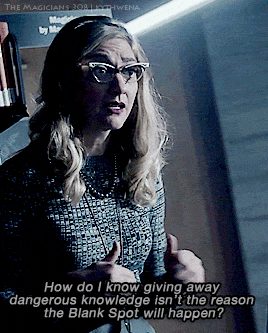
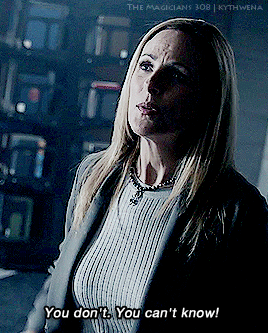


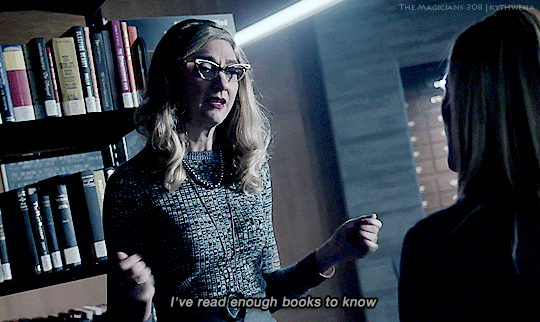

You can't know! Because the loss that's coming, you can't fix by reading a book. You fix it by... trusting other people to do the right thing, to help.
The Magicians | S03E08: Six Short Stories About Magic (2018)
#the magicians#themagiciansedit#zelda schiff#harriet schiff#kw makes gifs again#3x08#six short stories about magic#asl#sign language
97 notes
·
View notes
Photo
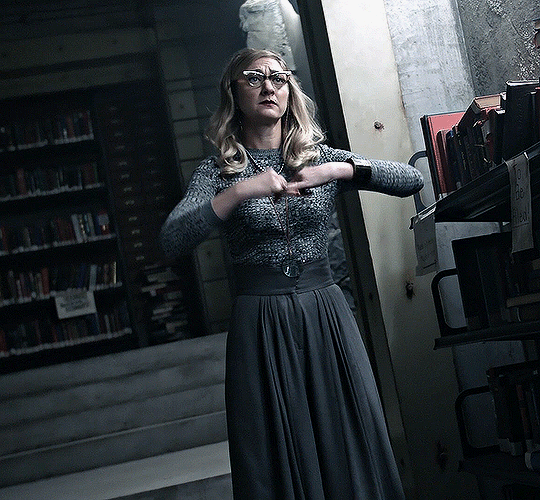

THE SCHIFF FAMILY.
#the magicians#magiciansedit#mageina tovah#zelda schiff#marlee martin#harriet schiff#bbelcher#i miss these ladies so much it hurts#*
89 notes
·
View notes
Photo

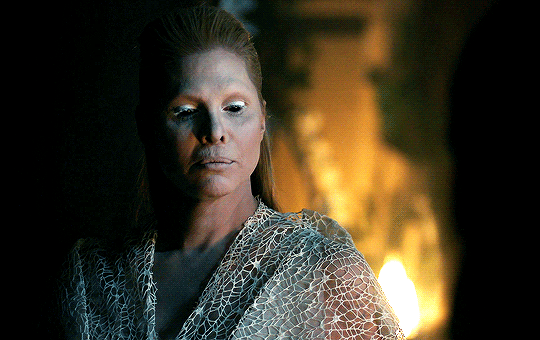
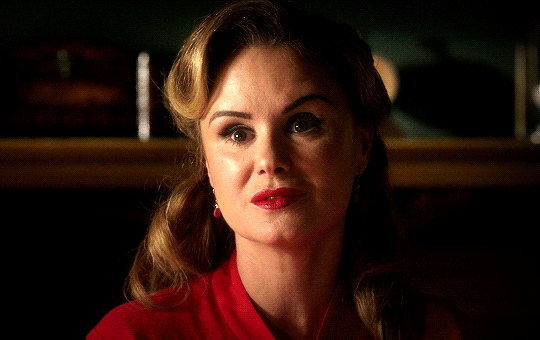



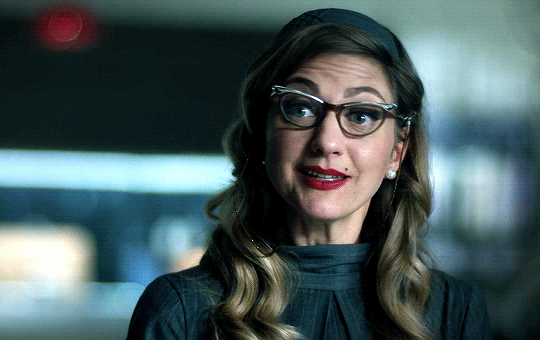
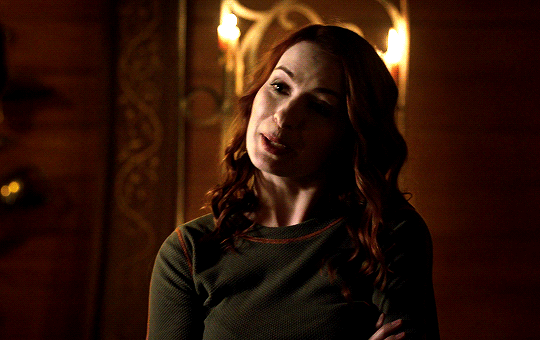
The Magicians + secondary female characters
#bbelcher#themagiciansedit#the magicians#jane chatwin#zelda schiff#fairy queen#professor lipson#our lady underground#harriet schiff#plum chatwin#poppy kline#*
411 notes
·
View notes
Photo
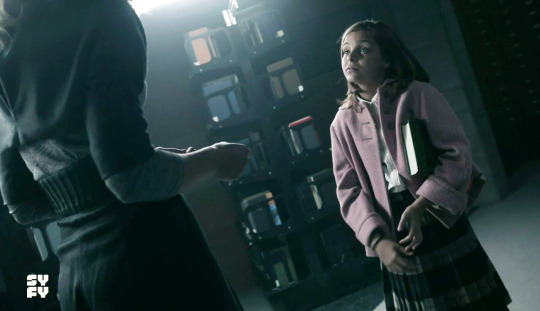

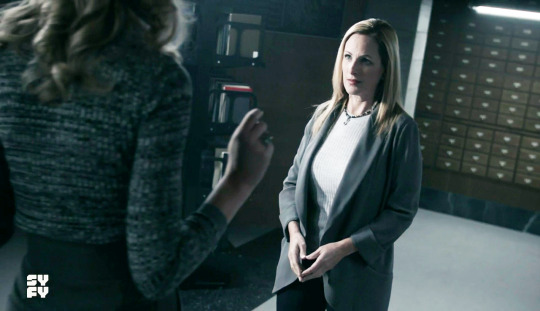
Whitespire’s Armory: Growth
Harriet in the Library
@whitespiresarmory
104 notes
·
View notes
Text

Today’s disabled character of the day is Harriet Schiff from The Magicians, who is Deaf
Requested by Anon
17 notes
·
View notes
Photo

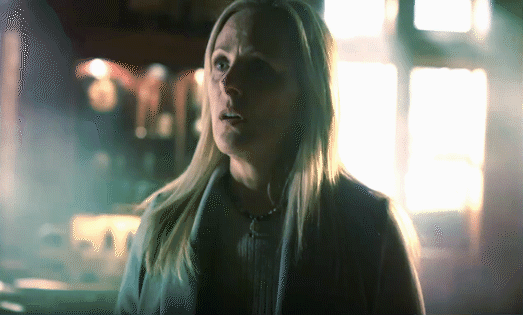
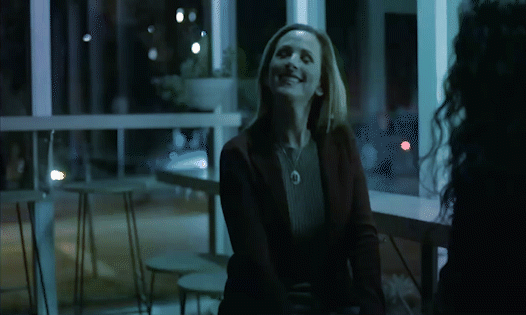

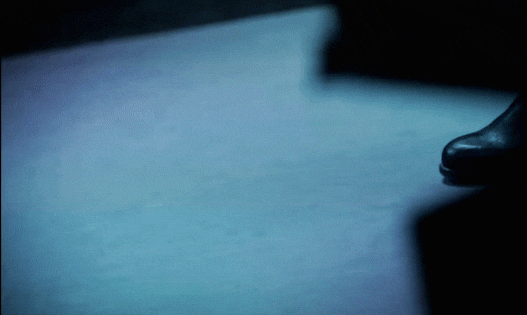

Day five: Magicians underappreciated characters 5/?
Harriet Schiff
1 2 3 4 6
#the magicians#the magicians cast#underappreciated characters#underappreciated magicians characters#harriet schiff#the magicians harriet#our stuff
65 notes
·
View notes
Photo

I’m sorry I was angry
29 notes
·
View notes
Quote
No one writes books about people who stay behind and read.
Harriet Schiff
11 notes
·
View notes
Text
WRITING CHALLENGE PROMPT
Fictober19: Day 14
Prompt: “I can’t come back.”
Fandom: The Magicians, semi-canon
Warnings: n/a
A/N: Sign language is in ‘single’ quotes, out loud speaking is in “double” quotes. In case that isn’t obvious.
Harriet looked up as the door to her room opened, expecting it to be one of her classmates. It wasn’t.
‘Mom.’ She hadn’t seen her since that day in the Library, when her mom had forbade her from giving Library knowledge to her classmates. ‘What are you doing here?’
‘Can’t a mother just visit her daughter?’ Her mom signed hesitantly, looking around to make sure no one else was in the room before she came in.
‘You never came before. What do you want?’ Harriet watched as her mom closed her eyes briefly before opening them again, looking like she was holding back tears. Her mom never cried.
‘Come home, Harriet. Please. Come back to the Library.’
‘No.’ The sign was sharp, cutting through the air as she straightened up to face her mother. ‘I can’t come back. Not until you start giving knowledge to the ones who need it. There are whole worlds that could benefit from just one book in the Library. I don’t see why you have to starve them.’
‘Knowledge is dangerous. You know that.’
There was a flash at the door, a light spell that her friends at Breakbills used to let her know they were outside and wanted to come in. Harriet got up and moved past her mom to open the door.
“Hey, we’re going to the library if you want —“ The other girl trailed off in the middle signing ‘library’ as she spoke, looking over Harriet’s shoulder. “Who’s that?”
“My mom. She was just leaving. I’ll be right there.” Harriet turned around and looked back at her mom, who was watching her with dismay. ‘Goodbye, mother. I love you.’
She left before her mother even had a chance to sign anything back. She told herself she didn’t regret it.
7 notes
·
View notes
Photo

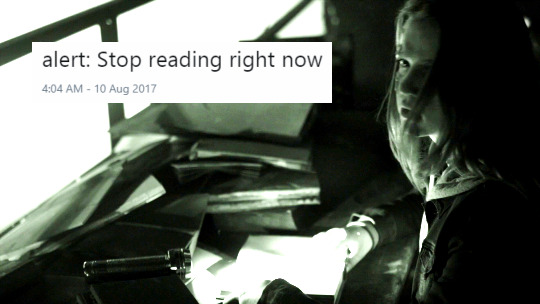


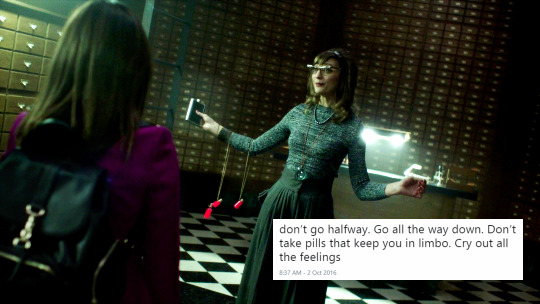





The Magicians + NYT Minus Context, part 3/? ⇝ The Library Edition
made for @thewelterschallenge
#the magicians#themagiciansedit#the welters library#welters challenge 2019 week 1#the 2019 welters challenge#zelda schiff#harriet schiff#penny adiyodi#sylvia#sheila cozener#phyllis#everett rowe#it's fun to continue making these :D#thanks to The Welters Challenge for the prompt#I can't wait for more ❤#nytmagicians#!made by me
51 notes
·
View notes